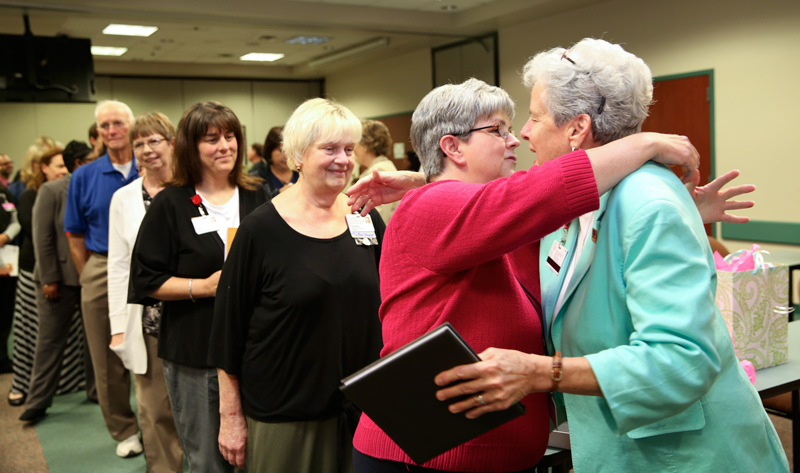
When we sisters gather, it can be a trifle startling to hear what individual sisters raise up in moments of spontaneous prayer. One now deceased sister at my community’s motherhouse prayed each year for “a gentle and penetrating rain,” as she called it, in planting season. Another sister has regularly offered a petition “for those who have no one to pray for them.”
That one always gets me. We routinely pray for the Church, the world, and the nation. We ask for peace. We remember families. We pray for the sick and beg for eternal rest for our loved ones and all the faithful departed. But what about those who tend to fall through the cracks of our intercessory imaginations?
I’ve examined my conscience a bit on this one. I’ve read plenty over the past months and years about the Rohingya, and in the early 1990s I heard news clips about the bloodshed in Rwanda. Those of us involved with schools hear, over and over, about active shooters. Yet, for reasons I don’t altogether fathom, it rarely occurs to me to pray specifically for both victims and perpetrators in such high-profile cases. I pray for an end to terrorism and relief for victims’ families, but I don’t know that I have ever raised a prayer for terrorists or assassins. What would it mean to do so?
Prayer, I’m convinced, does make a difference. So it would make sense to lift up all sorts of people and situations in our appeals to God. God receives and responds to our prayers, no matter how subtly and no matter on what timetable. St. Monica shows that prayer exerts real leverage in seemingly impossible circumstances. Think of the brilliant and misguided son who became St. Augustine. Clouds lift or interpersonal rifts undergo slow healing. The worst case scenarios for our illnesses don’t materialize. Disappointments and heartbreaks open doors. Prayer reshapes us and sometimes redirects history. We look back and see that the Jesus of “Footprints” works behind the scenes.
With all this in mind, I’ve made a top five list of new prayer intentions. The first one may bring a smile. This summer, all of the sisters in our Sisters of Sts. Cyril and Methodius community drew an intention for the year. I drew one that asked me to pray daily for students and teachers in Catholic schools. It recently struck me that I had better pray for principals, too.
Second come the youth and adults I’ve taught, whose names escape me. (Unfortunately, at this point I recall the students in the high school class of 1975 better than those in our rising deacon classes.) Third are the street people I’ve met and talked to over the years — and then forgotten. Fourth, I put prisoners who are likely to become repeat offenders unless a mountain moves within them. Fifth, I will pray for the behind-the-scenes souls who keep on praying for those who are never in anyone’s prayers. As I said, that sister really has gotten to me.
Sister Pamela Smith, SSCM, is the Secretary for Education and Faith Formation at the Diocese of Charleston. Email her at psmith@catholic-doc.org.




